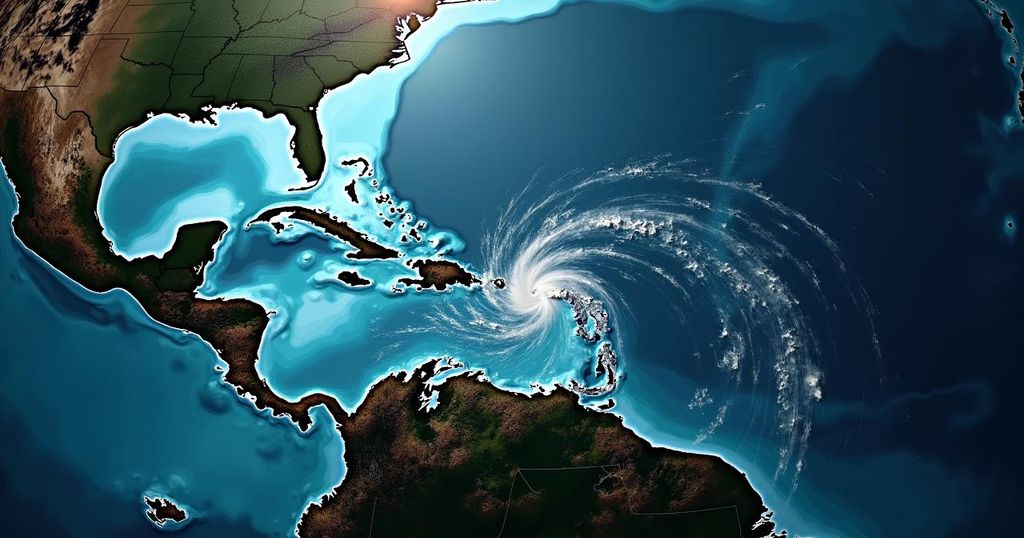Tropical Storm Kirk Forms and Expected to Strengthen into a Major Hurricane

Tropical Storm Kirk has formed in the eastern tropical Atlantic, with sustained winds of 60 mph and expected to strengthen into a major hurricane by Thursday. The storm poses no current threat to land. Additionally, disturbances in the southwestern Caribbean and near Cabo Verde may develop into tropical systems, warranting attention for potential impacts on the Gulf Coast.
Tropical Storm Kirk has officially formed in the eastern tropical Atlantic Ocean as of late Monday morning, according to the National Hurricane Center (NHC) in Miami, marking the 11th named storm of the 2024 hurricane season. Located approximately 800 miles west of Cabo Verde, the storm currently possesses sustained winds of 60 miles per hour and is advancing westward at a speed of 12 miles per hour as reported on Monday afternoon. The NHC forecasters predict significant strengthening for Kirk, particularly as it shifts to a west-northwest trajectory and traverses warm waters characterized by a moist environment and low wind shear conditions. Eric Blake, a forecaster at the NHC, noted, “Rapid intensification remains a notable possibility if this system can close off its inner core.” The latest forecast trajectory from the NHC indicates that Kirk is expected to achieve hurricane status by Tuesday afternoon and continue to develop into a major hurricane by Thursday, with potential categories reaching up to Category 4, implying sustained winds of at least 130 miles per hour. At present, the storm does not pose any imminent threat to Louisiana, and no watches or warnings have been issued for any land masses globally. Furthermore, a separate disturbance has been reported over the southwestern Caribbean Sea, producing a mix of showers and thunderstorms. The NHC suggests that this system has the potential to gradually develop into either a tropical depression or storm as it progresses toward the southern Gulf of Mexico. Although it is too early to determine the precise trajectory of this system, forecasters advise that the U.S. Gulf Coast should remain vigilant regarding its development. Additionally, a tropical wave situated a few hundred miles south of Cabo Verde is projected to likely develop into a tropical depression or storm within the forthcoming days. The NHC has assessed that there is a 90% probability of formation within the week. In terms of previously formed storms, both Isaac and Joyce have continued to weaken while moving through the open seas and are not expected to make landfall before dissipating.
The Atlantic hurricane season is a crucial period for meteorological monitoring and updates, given the potential for tropical storms and hurricanes to form and impact land. The National Hurricane Center plays a vital role in tracking these storms and providing public safety updates. Tropical Storm Kirk’s recent formation is a significant development, as it is forecasted to intensify into a major hurricane. The potential effects of such storms on coastal regions, particularly along the U.S. Gulf Coast, warrant attention and preparedness as these systems may evolve quickly. Understanding wind shear, water temperature, and atmospheric conditions are critical components in forecasting the potential trajectory and intensity of tropical systems.
In conclusion, Tropical Storm Kirk has emerged as a significant weather event in the 2024 hurricane season, with expectations of imminent strengthening into a major hurricane. Other disturbances in the region harbor potential for development, further underscoring the need for vigilance along the U.S. Gulf Coast. As meteorologists continue to monitor these systems, public safety and preparedness remain paramount.
Original Source: www.nola.com







